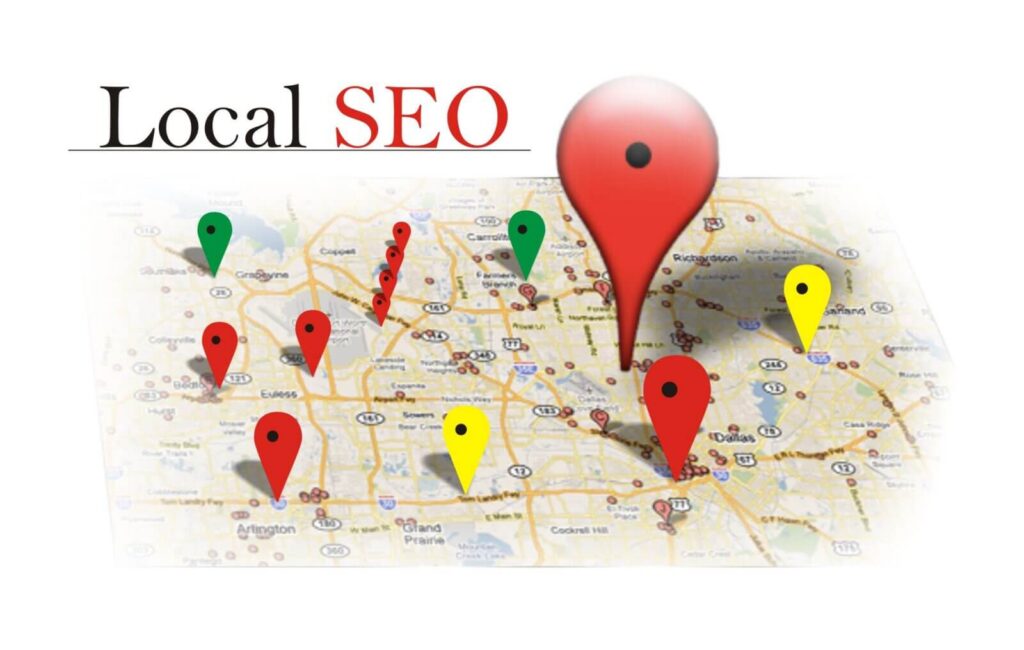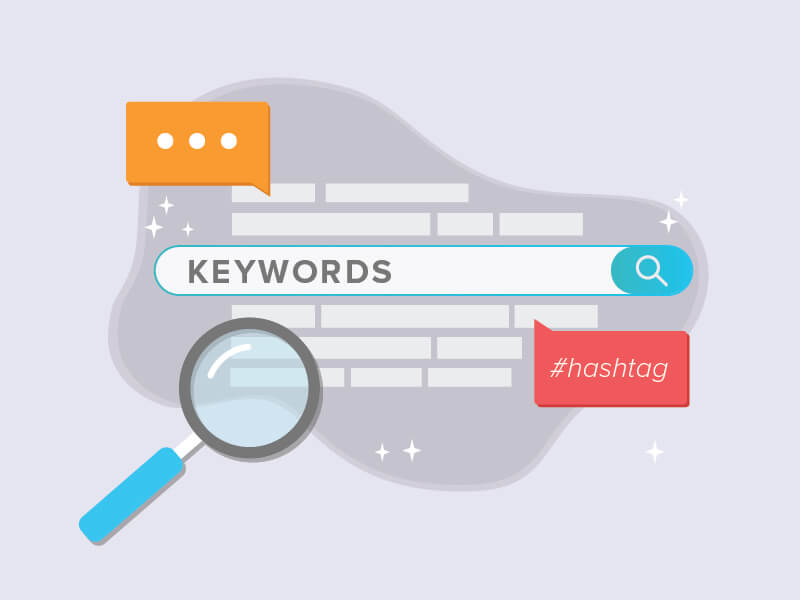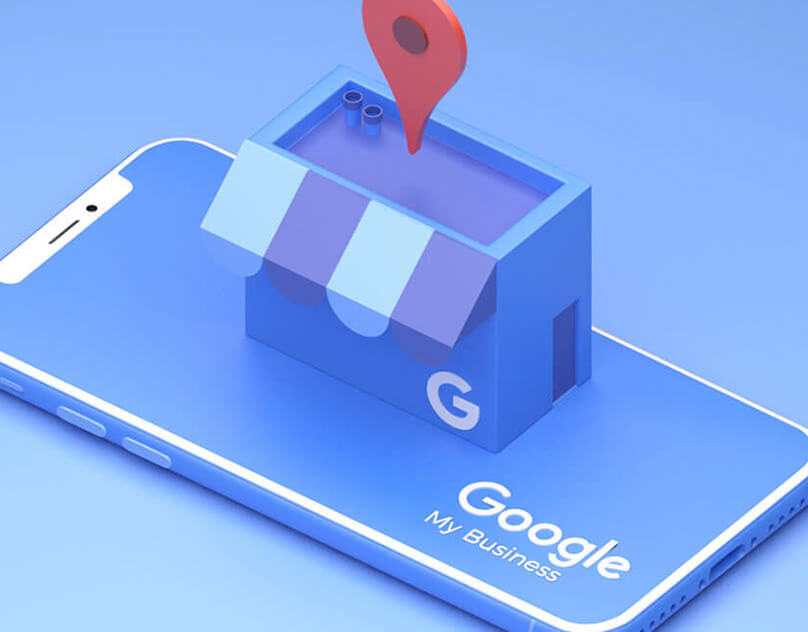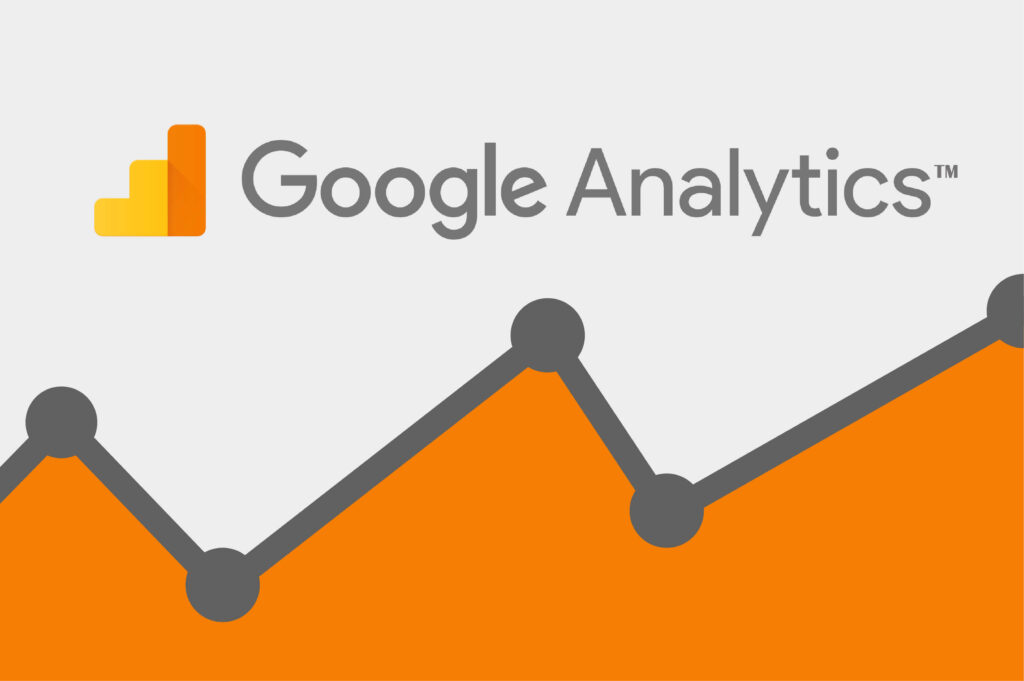Local SEO strategy is a powerful asset for small businesses because it allows them to target a specific geographic area, which can be more cost-effective than trying to reach a wider audience. A survey by BrightLocal found that 88% of consumers who searched for a local business on a mobile device called or visited the business within 24 hours. These statistics demonstrate that it can help them to reach a highly relevant and engaged audience, leading to increased visibility, foot traffic, and revenue.
What is Local SEO?

Local SEO is optimizing a website or online presence for search engines in a specific geographic location. It increases visibility and rankings for local businesses and services in search engine results pages (SERPs) for relevant keywords and phrases.
The goal is to make it easier for potential customers to find a business or service that is physically located near them. This is done by optimizing website content, meta tags, and backlinks to include location-specific keywords, such as the business name, address, and phone number (NAP).
Why Local SEO is Important for Small Businesses?

Keyword research for Local SEO is vital for small businesses because it helps them to be found by customers who are searching for their products or services in their local area. They can increase their visibility and attract more customers by optimizing their website and online presence for local search.
By optimizing for local search, small businesses can improve their search engine rankings for relevant keywords, making it more likely that potential customers will find them when searching for products or services in their area. This can lead to more website traffic, increased visibility, and, ultimately, more sales.
Another important aspect of local SEO is ensuring that your business information is accurate and consistent across all online directories and platforms. This includes directories such as Google My Business, Yelp, and Yellow Pages. By ensuring that your business information is accurate and consistent, you can improve your chances of appearing in local search results and increase your visibility to potential customers.
Local SEO solutions can also help small businesses establish themselves as reputable and credible in their local community. By appearing in local search results and directories, businesses become more trustworthy and reliable in their community, increasing customer trust and ultimately leading to more sales.
Key Elements of Local SEO

To understand the benefits of local SEO, you must focus on three key elements: NAP, GMB, and local citations.
NAP: NAP stands for Name, Address, and Phone Number. These three pieces of information are critical for local SEO because they help search engines understand where your business is located and how to contact you. Ensure your NAP is consistent across all your online listings, including your website, social media profiles, and directories.
GMB: Businesses can manage their online presence across Google, including Google Maps and search results, with Google My Business, a free tool offered by Google. A complete and accurate GMB listing is crucial for local SEO because it helps search engines understand your business’s location, hours, and services. It also lets customers leave reviews, giving you room to maintain and improve your online reputation and rankings.
Local citations: Local citations are another essential aspect of local SEO. These are mentions of your business’s NAP on other websites, such as directories, review sites, and social media profiles. The more citations your business has, the more authoritative it appears to search engines, and the higher it will rank in local search results.
What is the right way to optimize website content as per the local search intent?
When optimizing your website for local search intent, there are some vital things to remember. By following these best practices, you can ensure that local customers more easily find your site and that your content is tailored to their needs.
Use Local SEO Keyword Research

One of the most important things you can do to optimize your site for local search intent is to use local keywords throughout your content. This means including the name of your city or town and any relevant local landmarks or neighborhoods. For example, if you run a pizza restaurant in Chicago, you should include the keywords “Chicago pizza” throughout your site.
Include Contact Information
Another important aspect of local SEO is ensuring your contact information is prominently displayed on your site. This includes your phone number, address, and email address. Include this information on your homepage and other pages you want customers to find easily.
Use Google My Business

Google My Business is a free tool that allows you to create a listing for your business on Google. This listing will appear when people search for your business on Google. By creating a listing, you can make sure that local customers easily find your business.
Create Localized Content

Creating localized content is another excellent way to optimize your site for local search intent. This means writing blog posts or creating other types of content that are specific to your local area. For example, you could write a post about the best pizza restaurants in Chicago or create a guide to the best parks in your city.
Optimize Your Images

Finally, it’s essential to optimize your images for local search intent. This means including keywords in your images’ file names and alt tags. For example, if you have an image of a pizza, you could name the file “Chicago-pizza.jpg” and include the alt tag “Chicago Pizza.”
Why Reviews Matter and How To Encourage Positive Customer Reviews
Reviews are crucial to any business, as they provide valuable feedback and insight into the customer experience. Positive reviews can significantly impact a business’s reputation, while negative reviews can cause damage. Let’s discuss why reviews matter and how to encourage customers to leave positive reviews.
Why Reviews Matter:
- Reputation Management: Reviews are a powerful tool for managing a business’s reputation. Positive reviews can help a business establish credibility and attract new customers, while negative reviews can damage a business’s reputation and deter potential customers.
- Search Engine Optimization: Reviews are also crucial for SEO. Positive reviews can help a business rank higher in search engine results, as Google and other search engines use reviews as a ranking factor.
- Customer Insights: Reviews provide valuable insights into the customer experience. They can help a business identify areas where they are excelling and areas where they need improvement.
How to Encourage Positive Reviews:
- Provide Excellent Service: The best way to encourage positive reviews is to provide excellent service. Customers who have a positive experience are likelier to leave a positive review.
- Ask for Reviews: Don’t be afraid to ask customers to leave a review. A simple ask can go a long way in encouraging customers to leave a review.
- Make it Easy: You can do this by providing links to review sites or putting easy-to-use review sections on your site. Read-to-use sentences like I liked the service or underwhelming experience, can do better will eliminate the need for people to write.
- Respond to Reviews: Responding to positive and negative reviews shows that a business values customer feedback and is willing to improve.
Mobile Optimization for Local Businesses – How To Ensure Your Website Is Mobile-Friendly

As more and more consumers turn to their mobile devices to search for local businesses, local businesses must ensure that their websites are mobile-optimized. A mobile-friendly website will provide a better user experience for potential customers, improve your search engine rankings, and drive more traffic to your site. In this blog post, we’ll discuss some critical strategies for mobile optimization for local businesses and how to ensure that your website is mobile-friendly.
Use a responsive design
A responsive design is a website design that adjusts to the screen size of the device used. This means that the layout and content of your website will automatically adjust to fit the screen of a smartphone, tablet, or desktop computer. This is important because it ensures that your website will be easy to navigate and read on any device, providing a better user experience for potential customers.
Optimize your images
Large, high-resolution images can slow down the loading time of your website, which can be frustrating for mobile users. To ensure that your website loads quickly on mobile devices, optimize your images by compressing them and reducing size. This will not only improve your website’s loading time but also help minimize data usage.
Use a mobile-friendly navigation menu
Navigating a website on a mobile device can be challenging, especially if the navigation menu is not optimized for mobile devices. To ensure your website is mobile-friendly, use a navigation menu that is easy to use on a small screen. It might include a drop-down menu or a hamburger menu (three horizontal lines) that can be accessed by tapping on the icon.
Test your website on different devices
It’s essential to test your website on different devices to ensure that it is responsive. This includes testing different types of smartphones, tablets, and desktop computers. You can use tools like Google’s Mobile-Friendly Test or BrowserStack to test your website on different devices and see how it looks and performs.
Use mobile-friendly schema markup
Schema markup is a type of code that helps search engines understand the content of your website. By using mobile-friendly schema markup, you can tell search engines that your website is mobile-friendly, which can help to improve your search engine rankings.
Why Backlinks Still Matter – Tips To Get Backlinks From Local Sources

Backlinks, also known as inbound links, point to your website from other websites. Search engines consider your content valuable and relevant when other websites link to it; this is crucial to SEO (search engine optimization).
Despite the many changes in SEO over the years, backlinks remain an important ranking factor. In fact, according to a study by Moz, backlinks are the third most important ranking factor behind content and on-page optimization.
So why do backlinks still matter? Here are a few reasons:
- Having backlinks indicates that a website is popular and authoritative. A website with more backlinks is more likely to be revisited.
- Your website can receive referral traffic from backlinks and is directly accessible when someone clicks on a backlink to it, allowing you to convert them to customers.
- Long-tail keywords can be ranked better with backlinks. Search engines use backlinks to determine the authority and relevance of a website.
So how can you go about getting relevant backlinks from local sources?
Here are a few tips:
- Reach out to local businesses and ask if they would be willing to link to your website from their site.
- Submit your business to local directories and online business listings, such as Yelp or Google My Business.
- Participate in local online communities and forums, and include a link to your website in your signature or profile.
- Create high-quality content relevant to your local area and promote it on social media and other online platforms.
- Collaborate with other local businesses and websites to create co-branded content that includes links back to your website.
Backlinks still matter in SEO, and getting relevant backlinks from local sources can help you boost your visibility and credibility with both search engines and your local audience. By being proactive, you can gain backlinks that will positively impact your website’s ranking, increase referral traffic and ultimately help you achieve your business goal.
What Tools Can Help You Measure Your Progress with local SEO?
Regarding local SEO, tracking your progress and measuring your success is crucial. By monitoring your rankings, traffic, and engagement, you can identify areas for improvement and adjust your strategy accordingly. But what tools can you use to measure your progress with local SEO? Here are a few options to consider:
Google Analytics:

This is a must-have tool for any business that wants to track its online performance. Google Analytics allows you to see how many people visit your website, where they’re coming from, and what pages they’re looking at. You can also see how long they stay on your site, which can help you identify areas where users drop off. This information can help you make data-driven decisions about your strategies.
Google My Business:
Claim and verify your Google My Business listing if you haven’t already. This helps you monitor searches, click-through rates, and the number of calls and visits to your location. You can also see how your business is performing in terms of reviews and ratings, which can help you identify areas for improvement.
SEMrush:

This is a powerful tool that allows you to track your rankings, as well as your competitors’ rankings, for various keywords. You can also see how many people are searching for those keywords, which can help you identify opportunities to target new keywords. This information can help you adjust your strategy to target the keywords most likely to drive traffic to your website.
Ahrefs:

This tool is similar to SEMrush but also provides information on backlinks, which are essential for local SEO. By tracking your backlinks, you can see which sites are linking to your website and how valuable those links are. This information can help you identify opportunities to build new links and improve your local SEO progress.
Local SEO Checklist:
This tool is a great way to keep track of your local SEO progress. It provides a checklist of tasks you can complete to improve your local SEO, such as claiming your Google My Business listing, optimizing your website for local keywords, and building backlinks. This can help you stay on track and complete all the critical tasks.
Using these tools, you can track your progress with local SEO tips and make data-driven decisions about your strategy. Keeping track of your performance and adjusting your approach as necessary is essential. With the right tools and a solid strategy, you can improve your local SEO ranking factors and drive more traffic to your website.
Conclusion:
In conclusion, local SEO is a powerful tool for businesses looking to increase their online visibility and reach a local audience. Businesses can improve their local search rankings and attract more customers by focusing on location-based keywords, Google My Business optimization, and online reviews. Whether you’re a small business owner, a marketer, or a business consultant, understanding the basics of local SEO is essential for success in today’s digital landscape. We hope this guide has given you a clear understanding of how to do local SEO can benefit your business. Don’t forget to stay up-to-date with the latest trends and best practices to continue driving traffic and boosting your bottom line.
Happy optimizing!



